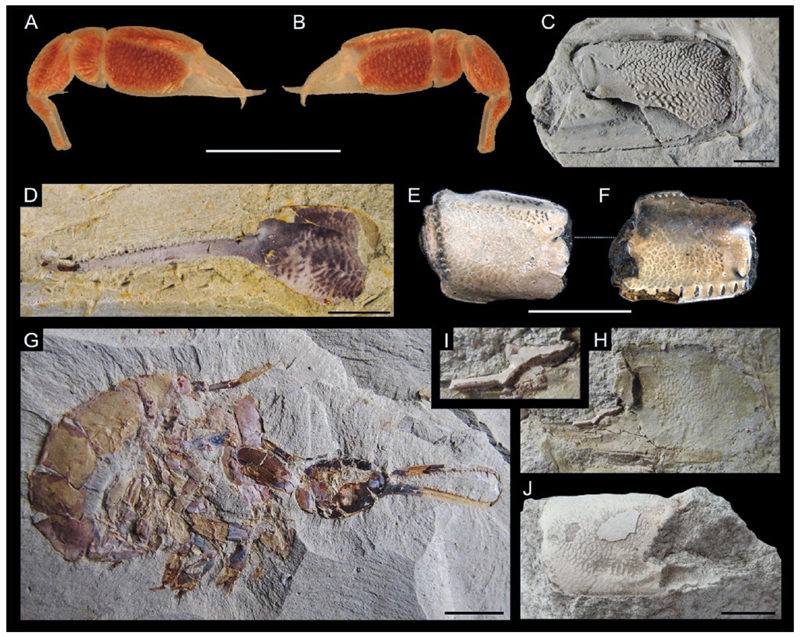Fig. 8.
Preservation of the muscle scars and cuticle in fossil ghost shrimps. A,B: Right major chela of a modern specimen of Paragourretia phuketensis Sakai, 2002 (SMF 29522) in outer (A) and inner lateral view (B); transparent cuticle allows observation of the cheliped musculature. C: Internal mould of the major chela of Calliax michelottii (A. Milne-Edwards, 1860) (UMJGPA 77874) from the early Miocene of Slovenia showing muscle scars preserved as positive relief. D: Major propodus of Ctenocheles fritschi Hyžný, Kočová Veselská & Dvořák, 2014 (RMM G-Pa 1031) from the Late Cretaceous (Coniacian) of the Czech Republic showing muscle scars as stains preserved on the cuticular surface. E,F: Right propodus of Callianassa hulli Rathbun, 1935 (holotype USNM MO371576) from the Paleocene of the USA (Arkansas) in two views showing muscle scars. G: Near-complete individual of C. fritschi with preserved cuticle on all parts including abdominal somites (PCZD). H,I: Major chela of Callianopsis marianae Hyžný & Schlögl, 2011 (SNM-Z 24826) from the early Miocene of Slovakia exhibiting preservation of the cuticle on the occlusal surface of the fixed finger. It also shows a reticulate pattern of propodal muscle scars. J: Right major propodus of C. michelottii (GBA 2009/014/0027) from the middle Miocene of Slovenia with preserved muscle scars. Note that the muscle scars can be seen on the internal mould, but not on the cuticle. Specimens in C and J were coated with ammonium chloride prior the photography. Scale bars equal 5.0 mm.

